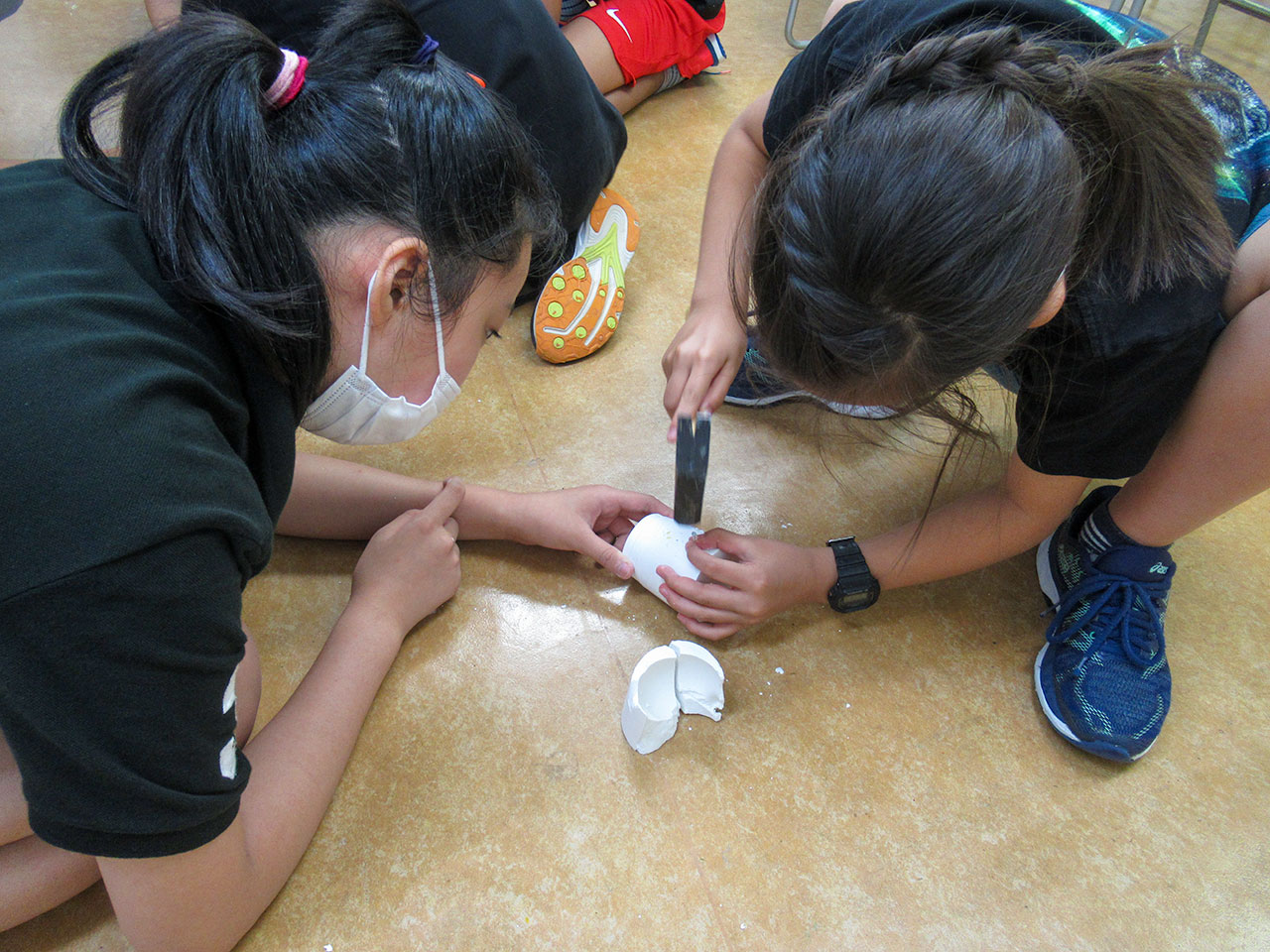Think like a proton: Always Positive!
Recently G5&6 have been exploring the world of weathering through a range of exciting and thought provoking science experiments. Students learned that Earth’s materials can be weathered, or broken down, both mechanically and chemically.
Students looked at freeze-thaw weathering. This type of mechanical weathering occurs when water enters cracks in rocks, the water freezes and expands, widening the crack in a repeated pattern until finally the rock splits. First, to prove that water expands when frozen, students conducted an experiment using water, a jar with the lid placed on top. They placed the jars full of water in the freezer for 24 hours. After inspecting the jars filled with frozen water, students could see that the water had expanded as the lid was pushed up.


Next we tested whether the expansion of water when frozen can crack rocks. First students put some water into a balloon, which was the water element in the experiment. Then, with their teacher’s guidance, students made plaster, which acted as the rock. After placing the balloon carefully into a plastic cup and pouring the plaster over it, students left their cups in the freezer to allow the water to freeze. The next day, students inspected the cups and were excited to see that the plaster had cracked! This proved that rocks can crack due expansion of water when frozen.
Following instructions from their teacher, students made a simple model of mechanical weathering using gypsum sidewalk chalk, salt, and a glass jar. Students coloured the chalk so that it would be easier to see the weathered material. Salt was the abrasion agent in this experiment. Students saw that as they shook the jars, and the rubbing of the grains of salt slowly weathered the chalk. Students then used the model to create explanations on the phenomenon of mechanical weathering.
Then it was time to model chemical weathering. Students started by looking at the effects of a weak acid(vinegar) on calcium carbonate (chalk). To model this, students used chalk, vinegar, a water dropper and a paper towel. When the acid touched the chalk, students could see that bubbles formed and it eroded the chalk. Chemical weathering by weak acids was successfully proven!
Next, students looked at another example of chemical weathering relating to ocean acidifcation. This activity demonstrated the ability of a weak acidic substance (in this case, vinegar) to weather seashells (calcium carbonate). Students placed seashells in a bowl with the weak acid and left the seashells sitting in the acid for a few days. Students were able to see the seashells grow thinner and thinner, with holes forming and the shells eventually breaking.



